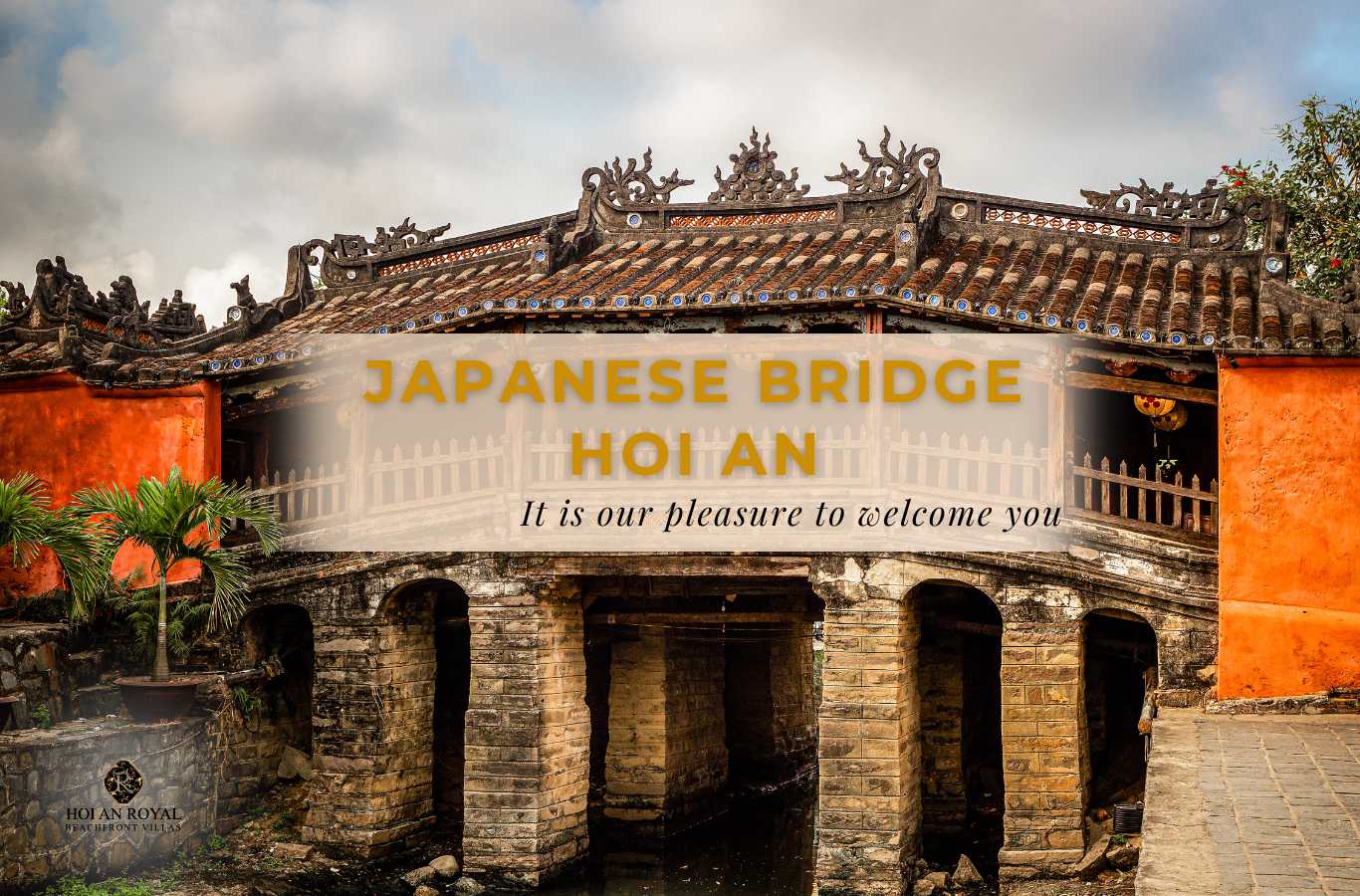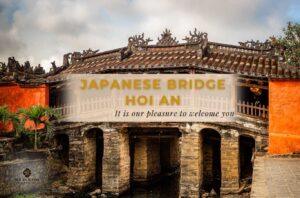Hidden among the bustling old streets, the Japanese Bridge Hoi An offers a tranquil, ancient space rich in Eastern culture. Here, every architectural detail and legendary story makes visitors linger longer. Join Hoi An Royal Beachfront Villas to discover interesting facts and important notes when visiting this Japanese Bridge.
Table of Contents
ToggleWhere is the Japanese bridge Hoi An? Unveiling its legendary tale
The Japanese Bridge Hoi An is a unique cultural and architectural symbol located right in the ancient town of Hoi An, Quang Nam province, Vietnam. The bridge is situated on Nguyen Thi Minh Khai Street, Minh An Ward, spanning a small branch of the Thu Bon River, connecting two main streets of the old town: Nguyen Thi Minh Khai and Tran Phu.
The bridge was built around the 17th century with contributions from Japanese merchants to connect the Japanese quarter with the Chinese quarter in Hoi An. Initially, this bridge was called the Japanese Bridge.
According to legend, the Japanese Bridge was built like a sword stabbing into the back of the Namazu monster – a giant fish with its head in India, body in Vietnam, and tail in Japan. Whenever this monster moved, it would cause earthquakes and floods. The construction of the bridge aimed to subdue and prevent the monster from wagging its tail, thereby keeping these three countries peaceful and prosperous.
After the bridge was built, a small pagoda was erected on it to worship Bac De Tran Vo, and from then on, the bridge was called the Pagoda Bridge. In 1719, Lord Nguyen Phuc Chu visited Hoi An and named the bridge “Lai Vien Kieu,” which means “Bridge to welcome visitors from afar.”
The Japanese Bridge has undergone several restorations, including one in 1817 and the most recent in August 2024. In 1990, the bridge was officially recognized as a national historical and cultural relic, further affirming the bridge’s iconic position throughout Hoi An’s history.
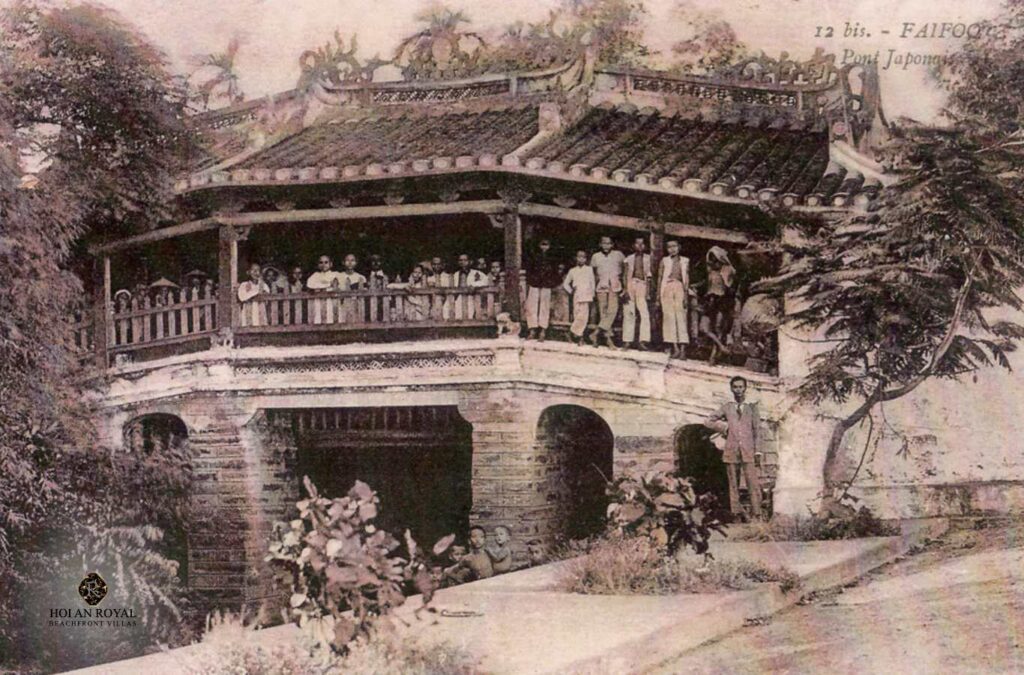
Unique cultural and architectural imprints in Hoi An
The unique cultural and architectural imprint of the Japanese Bridge Hoi An Viet Nam is clearly shown through the delicate blend of Japanese, Chinese, and Vietnamese cultures. The bridge is about 18 metres long and 3 metres wide, built of wood on stone and brick piers, with a yin-yang tiled roof typical of Hoi An’s ancient architecture.
The small pagoda on the bridge was built to worship Bac De Tran Vo, a protective deity, with wooden doors, walls, and sliding panel doors bearing strong Chinese style, finely carved with traditional motifs. The roof of the pagoda and bridge is covered with yin-yang tiles, and the ridge and eaves are inlaid with blue-glazed ceramics, creating distinctive artistic highlights.
At both ends of the bridge are statues of dogs and monkeys exquisitely carved from jackfruit wood, symbolising protection and warding off evil spirits, reflecting ancient Japanese beliefs and culture. The bridge’s architecture consists of three parts: the two ends made of brick with three spans each, and the middle part is a wooden frame with five spans, creating a unique “house on bridge” structure.
The Japanese Bridge is not only a transportation structure but also a place of worship, a symbol of the diverse cultural intersection in Hoi An – once a bustling international trading port. Its architecture carries the gentle melancholy of Hue combined with optimism, reflecting the quiet yet vibrant soul of Hoi An’s ancient town.
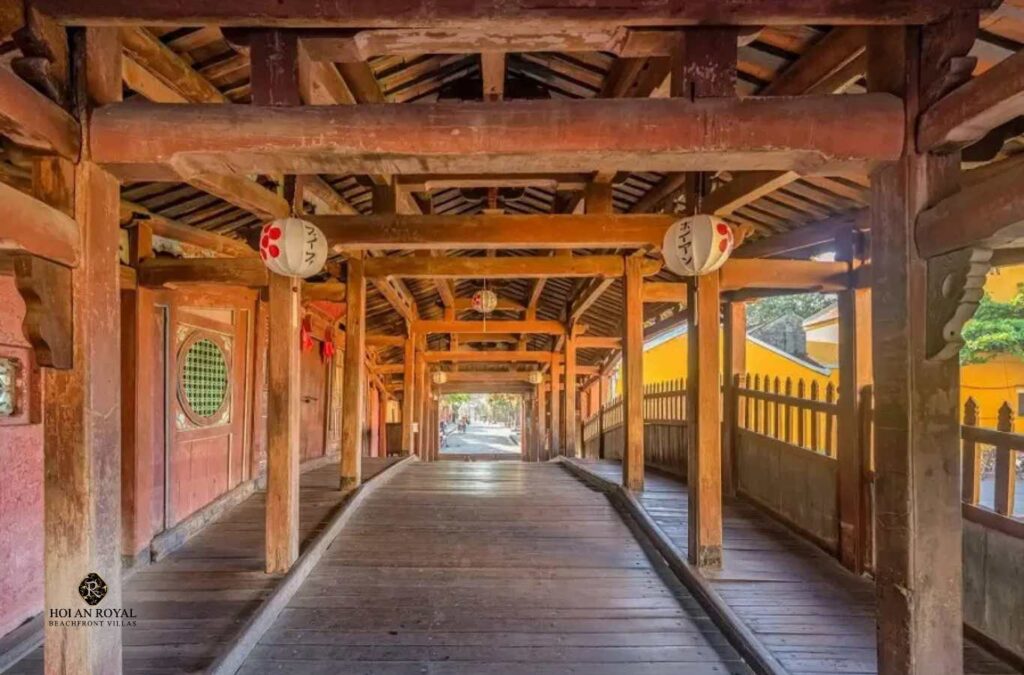
Interesting facts about the Japanese Bridge Hoi An
The Vietnamese Dong banknote features the Japanese Bridge Hoi An
Few people notice that the Japanese Bridge – a unique architectural structure of Hoi An ancient town – is solemnly printed on the 20,000 VND polymer banknote. This is not only a source of pride for local people but also proof of the special cultural value of this monument in the hearts of the Vietnamese.
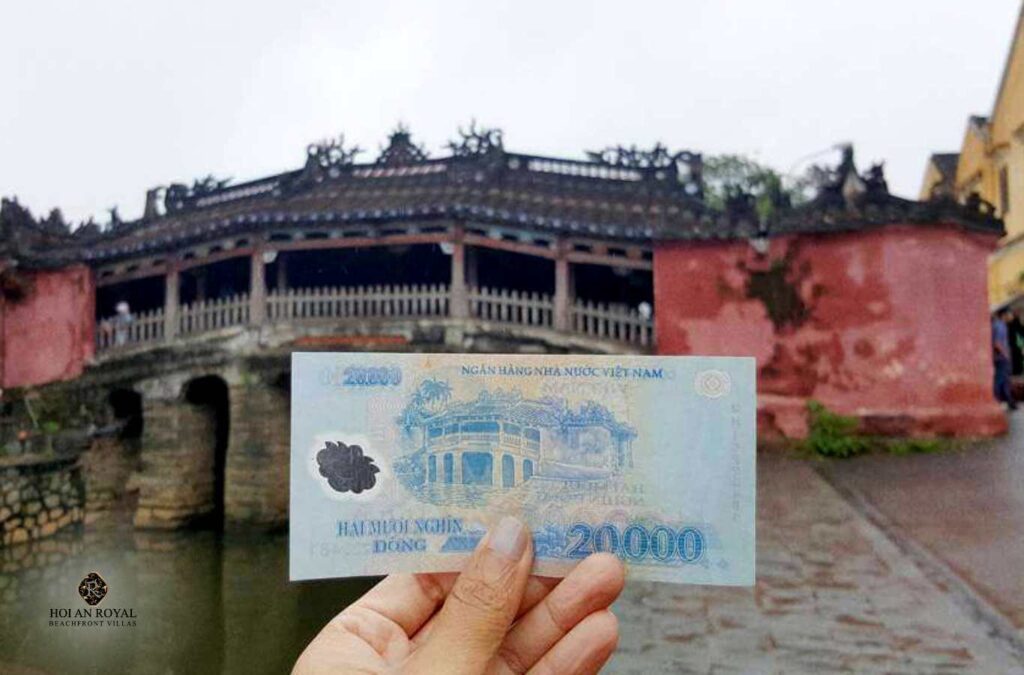
The bridge does not worship Buddha
Contrary to its name, the Japanese Bridge is not a place for worshipping Buddha. Inside the bridge is a shrine dedicated to Bac De Tran Vo – the god who guards the North, with the meaning of warding off evil spirits and protecting the peace of Hoi An’s people for centuries.
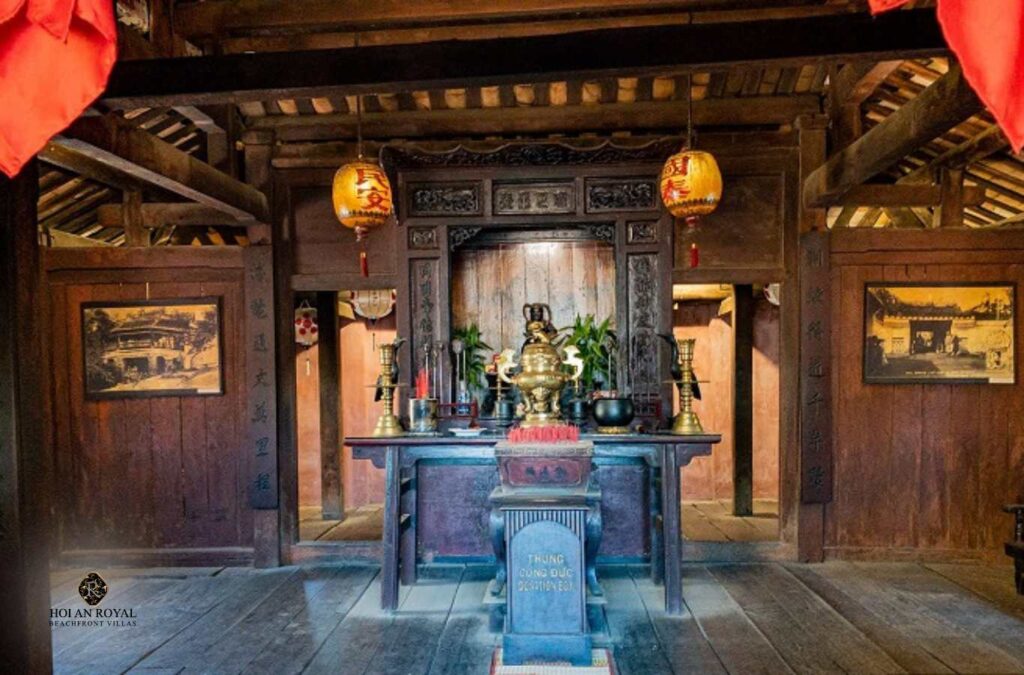
The Japanese Bridge has two distinct parts
The bridge is divided into two clear parts. The two ends are solidly built of brick, each end with three spans. The middle part is made entirely of wood, consisting of five spans placed on sturdy brick piers embedded deep into the waterbed. The harmonious combination of brick and wood creates an ancient yet delicate beauty for this more than 400-year-old structure.
The most convenient way to travel and visit the Japanese Bridge
The Japanese Bridge is located at 186 Tran Phu, Minh An Ward, right in the centre of Hoi An ancient town – very convenient for walking and exploring nearby attractions. From Da Nang to the Japanese Covered Bridge Hoi An, visitors have many transportation options suitable for their time, budget, and personal preferences. Below is a comparison table to help you easily choose the most convenient way to Hoi An travel:
| Transport | Duration | Advantages | Notes |
| Taxi | Around 45 minutes | Fast, comfortable | Costs about 300,000 – 430,000 VND |
| Motorbike | Around 40 – 50 minutes | Flexible, can stop for photos and exploring | Ensure confident driving and familiarity with routes |
| Public bus | Around 70 minutes | Economical, local cultural experience | Route no.01 Da Nang – Hoi An, ticket about 25,000 VND |
| Private car/tourist car | Around 45 – 60 minutes | Suitable for groups, flexible timing | Easy parking at lots near the old town |
Activities to experience when visiting the Japanese Bridge Hoi An
When visiting the Japanese Bridge Hoi An, visitors can experience many attractive and meaningful activities as follows:
- Explore the architecture and listen to old stories: The Japanese Bridge stands out with its delicate blend of three cultures: Japanese, Vietnamese, and Chinese. Every detail on the bridge carries long-standing historical value, associated with the legend of a giant creature named Cu, which locals believe lives underground and causes earthquakes.
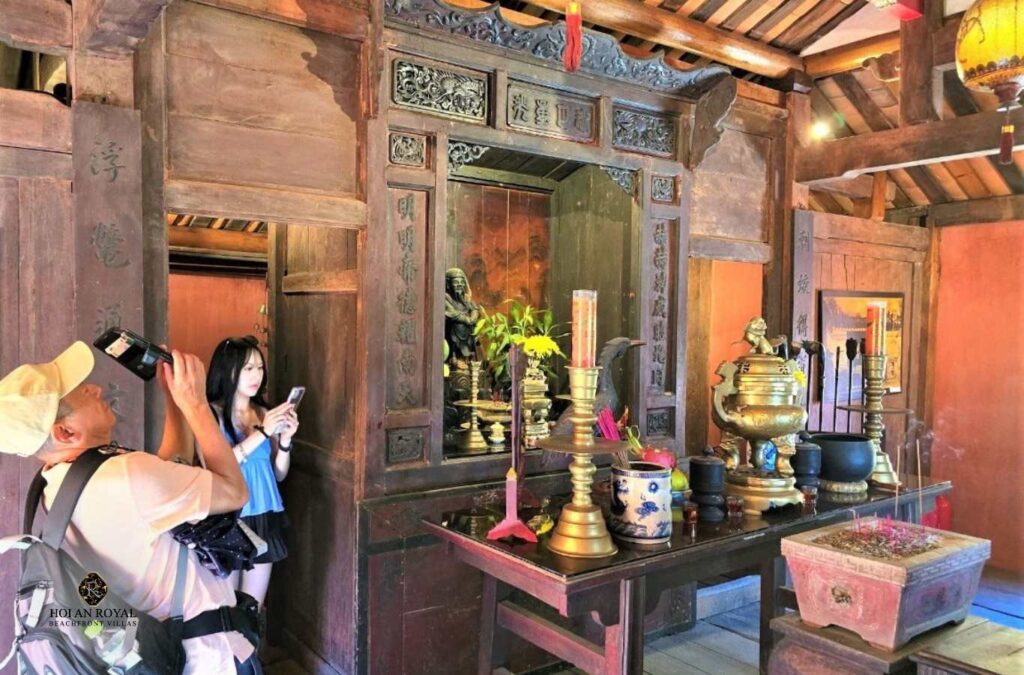
- Immerse yourself in the early spring festival atmosphere: On the full moon day of the first lunar month, the Japanese Bridge is bustling with traditional festivals and spiritual rituals. This is a special occasion to feel the local culture and interact with the people of Hoi An.
- Seek peace in the sacred space: Many visitors choose to stop at the shrine on the bridge to offer incense, praying for luck, health, and peace. Even if you only visit for a moment, you can easily feel the serenity radiating from this quiet place.
- Capture “picture-perfect” photos: Early morning with soft sunlight or dusk when the old town lights up are two ideal times to capture memorable moments by this ancient bridge. Natural light combined with the time-worn wooden architecture creates emotional and evocative frames.
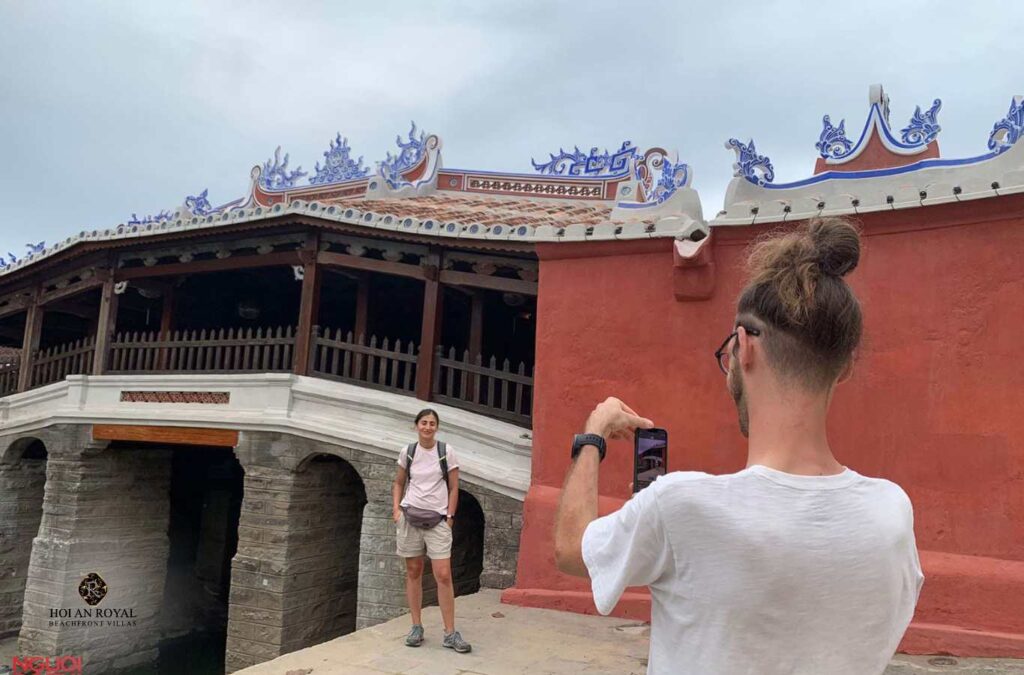
- Watch art performances and play folk games: In the evening, the area around the Japanese Bridge becomes lively with Bai Choi performances, lion dances, and folk games such as blindfolded pottery smashing. Not only entertaining, these are also interesting ways to learn more about the traditional cultural life of Hoi An.
Useful tips for visitors when touring the Japanese Bridge Hoi An
To make your visit more comfortable and complete, you should note the following:
- Visit in the early morning or late afternoon to avoid crowds and enjoy beautiful light for photography.
- Prioritise walking to easily access the bridge and nearby attractions in the old town.
- Bring a raincoat or umbrella if you visit during the rainy season to avoid interruption.
- Respect the sacred space, do not climb or damage the bridge.
- Combine visiting other monuments for a comprehensive view of Hoi An ancient town.
- Wear discreet and respectful clothing when entering the shrine area on the bridge.
- Maintain general hygiene, do not litter in the monument area and surroundings.
If you want photos that fully capture the essence of old Hoi An, the presets and suggested shooting angles in this document are definitely recommendations not to be missed.
Whether it is your first time in Hoi An or you have returned many times, the Japanese Bridge Hoi An always has something attractive and new. If you’re staying at Hoi An Royal Beachfront Villas, don’t miss the chance to take a short trip to this iconic site—it’s a perfect contrast to the luxurious coastal retreat you’re enjoying. Save this location to your journey and take time to feel its quiet beauty in the heart of this heritage town.
